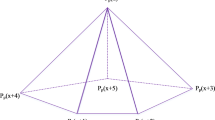Abstract
The Clinical Oncology of American Society report in 2016 predicted deaths are increased upto 9570 due to oral cancer. This cancer occurs due to abnormal tissue growth in the oral cavity. This cancer has limited symptoms, so, it has been difficult to recognize in the early stages. To reduce the death rate of this oral cavity cancer, an automatic system has been developed by applying the optimization techniques in both image processing and machine learning techniques. Even though these methods are successfully recognizing the cancer, the detection accuracy is still one of the major issues because of complex oral tissue structure. So, this paper introduces the Gravitational Search Optimized Echo state neural networks for predicting the oral cancer with effective manner. Initially the X-ray images are collected from the oral cancer database which contains several noises that has to be eliminated with the help of the adaptive wiener filter. Then the affected part has been segmented with the help of the enhanced Markov Stimulated Annealing and the features are derived from segmented region. The derived features are analyzed with the help of the proposed classifier. The excellence of the oral cancer detection system is evaluated using simulation results.





Similar content being viewed by others
References
GBD 2013 Mortality Causes of Death Collaborators, Global, regional, and national age–sex specific all-cause and cause-specific mortality for 240 causes of death, 1990–2013: A systematic analysis for the global burden of disease study 2013. Lancet 385(9963):117–171, 2015. https://doi.org/10.1016/S0140-6736(14)61682-2.
Werning, J. W., Oral cancer: diagnosis, management, and rehabilitation. p. 1. ISBN 978-1-58890-309-9, 2007.
Diz, P., Meleti. M., Diniz-Freitas M., Vescovi, P., Warnakulasuriya, S., Johnson, N., and Kerr, A., Oral and pharyngeal cancer in Europe. Translat. Res. Oral Oncol. 2, 2017.
Rodriguez, T., Altieri, A., Chatenoud, L., Gallus, S., Bosetti, C., Negri, E., Franceschi, S., Levi, F., Talamini, R., and La Vecchia, C., Risk factors for oral and pharyngeal cancer in young adults. Oral Oncol. 40(2):207–213, 2004. https://doi.org/10.1016/j.oraloncology.2003.08.014.
Elad, S., Zadik, Y., Zeevi, I., Miyazaki, A., Figueiredo, D., Maria, A. Z., and Or, R., Oral cancer in patients after hematopoietic stem-cell transplantation: Long-term follow-up suggests an increased risk for recurrence. Transplantation 90(11):1243–1244, 2010.
Ongole, R., and Praveen, B. N. (Eds), Textbook of oral medicine, oral diagnosis and oral radiology. India: Elsevier, 2014, 387 978-8131230916.
Prabhakar, S. K., and Rajaguru H., Performance analysis of linear layer neural networks for oral cancer classification. Stud. Project Conf. (ICT-ISPC) IEEE, 2017.
Liu, L.-C.; Lee, J., Hsu, Y., Liu, C. T., Tseng, E., and Tsai, M.-T., A region segmentation method on 2-D vessel optical coherence tomography images. Fuzzy Syst. Know. Discov. (FSKD) IEEE, 2013.
Sharma, N., and Om, H., Extracting significant patterns for oral cancer detection using apriori algorithm. Intell. Inform. Manag., 2014, 6, 30–37.
Shuai, Y., Liu, R., and He, W., Image haze removal of wiener filtering based on dark channel prior. Comput. Intell. Sec. (CIS), 2012 Eighth Int. Conf. IEEE, 318–322 2012.
Long, J., Shi, Z., and Tang, W., Fast haze removal for a single remote sensing image using dark channel prior. Comput. Vision Remote Sens. (CVRS), 2012 Int. Conf. 132–135, 2012.
Gibson, K. B., and Nguyen, T. Q., An analysis of single image defogging methods using a color ellipsoid framework. EURASIP J. Imag. Video Process., 2013.
Barghout, L., Visual Taxometric approach image segmentation using fuzzy-spatial taxon cut yields contextually relevant regions. Commun. Comput. Inform. Sci. (CCIS). Springer-Verlag. 2014.
Yang, Y., and Wang, Y., Simulated annealing spectral clustering algorithm for image segmentation. J. Syst. Eng. Electron. 25(3), 2014.
Meng, H., Hong, W., and Song, J., Feature extraction and analysis of ovarian Cancer proteomic mass spectra. 2nd Int. Conf. Bioinform. Biomed. Eng. (ICBBE), IEEE, 16–18 2008.
Rashedi, E., Nezamabadi-Pour, H., and Saryazdi, S., GSA: A gravitational search algorithm. Inform. Sci. 179(13):2232–2248, 2009.
Chatzis, S. P., and Demiris, Y., Echo state Gaussian process. IEEE Trans. Neural Netw. 22(9):1435–1445, 2011.
Hu, W., Huang, Y., Wei, L., Zhang, F., and Li, H., Deep convolutional neural networks for hyperspectral image classification. Hindawi Publ. Corp. J. Sens. Article ID 258619, 12 pages, 2015.
Kim, E.-M. , Jeong, J.-C., Pae, H.-Y., and Lee, B.-H., A new feature selection method for improving the precision of diagnosing abnormal protein sequences by support vector machine and vectorization method. Adapt. Nat. Comput. Algorithms, 4432, 2007.
Papantonopoulos, G. et al., Artificial neural networks for the diagnosis of aggressive periodontitis trained by immunologic parameters. PloS one 9.3:e89757, 2014.
Collobert, R. and Bengio, S., Links between Perceptrons, MLPs and SVMs. Proc. Int. Conf. Mach. Learn. (ICML), 2004.
Acknowledgements
The authors extend their appreciation to the Deanship of Scientific Research at King Saud University for funding this work through research group No. (RG-1439-53).
Author information
Authors and Affiliations
Corresponding author
Ethics declarations
Ethical Approval
This article does not contain any studies with animals performed by any of the authors.
Conflict of Interest
The authors declare that they have no conflict of interest. This research did not receive any specific grant from funding agencies in the public, commercial, or not-for-profit sectors.
Informed Consent
Informed consent was obtained from all individual participants included in the study.
Additional information
This article is part of the Topical Collection on Patient Facing Systems
Rights and permissions
About this article
Cite this article
Al-Ma’aitah, M., AlZubi, A.A. Enhanced Computational Model for Gravitational Search Optimized Echo State Neural Networks Based Oral Cancer Detection. J Med Syst 42, 205 (2018). https://doi.org/10.1007/s10916-018-1052-0
Received:
Accepted:
Published:
DOI: https://doi.org/10.1007/s10916-018-1052-0




